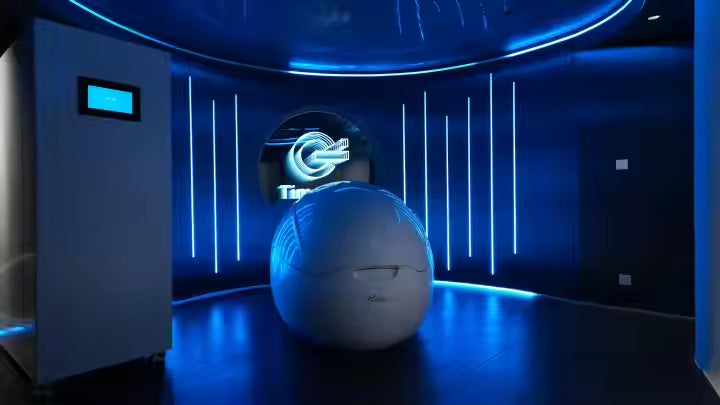
Sensory deprivation tank
Our premium enclosures provide a unique experience through total sensory deprivation.
Deliver an exceptional floating experience.
Used for over thirty years, flotation tanks are essential.
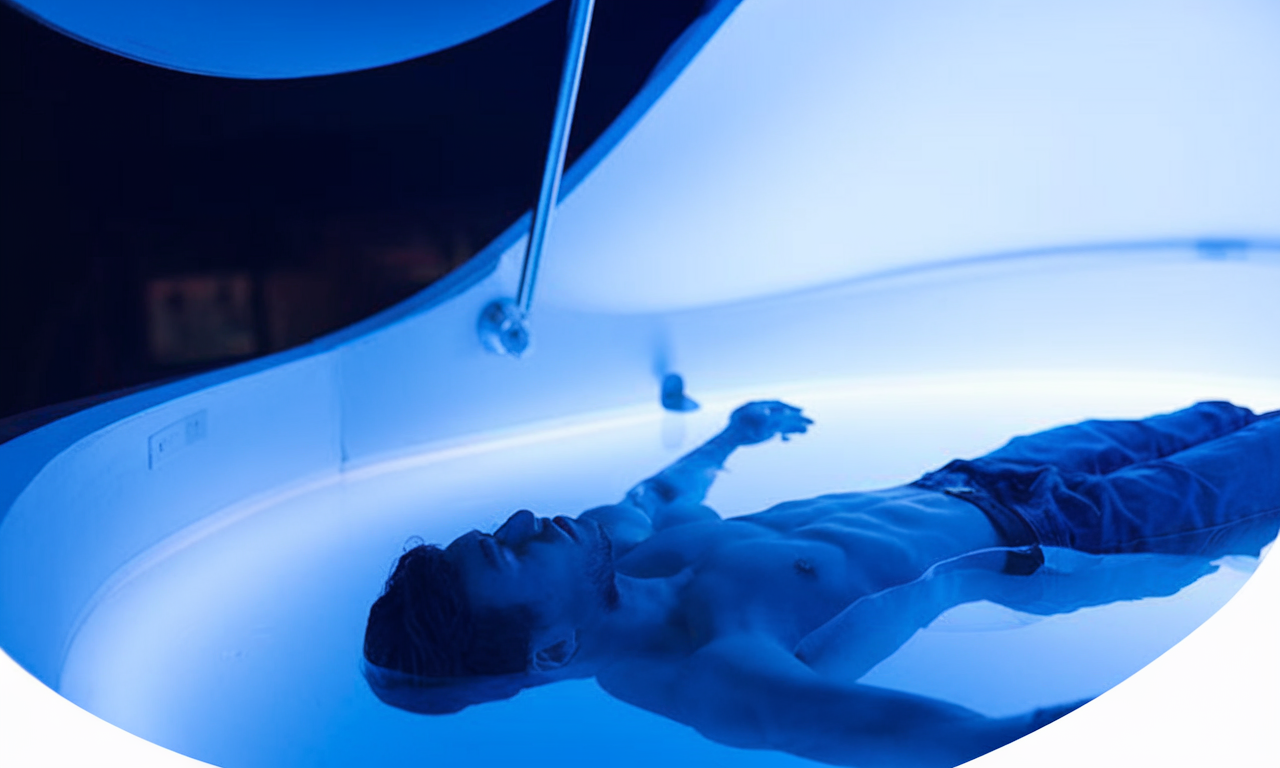
Your new deep relaxation service.
Our sensory isolation tanks are designed to minimize external stimuli to create the most soothing experience.
Once installed in the box, it closes and becomes a cocoon where the person can relax and let go of reality.
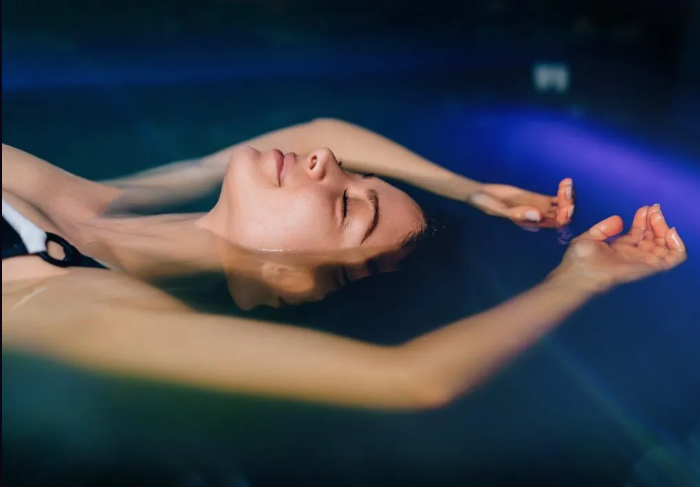
Sustainable benefits.
Our flotation tanks allow you to:
- reduce anxiety and stress
- disconnect from reality and improve your mood
- improves sleep
- promote muscle recovery
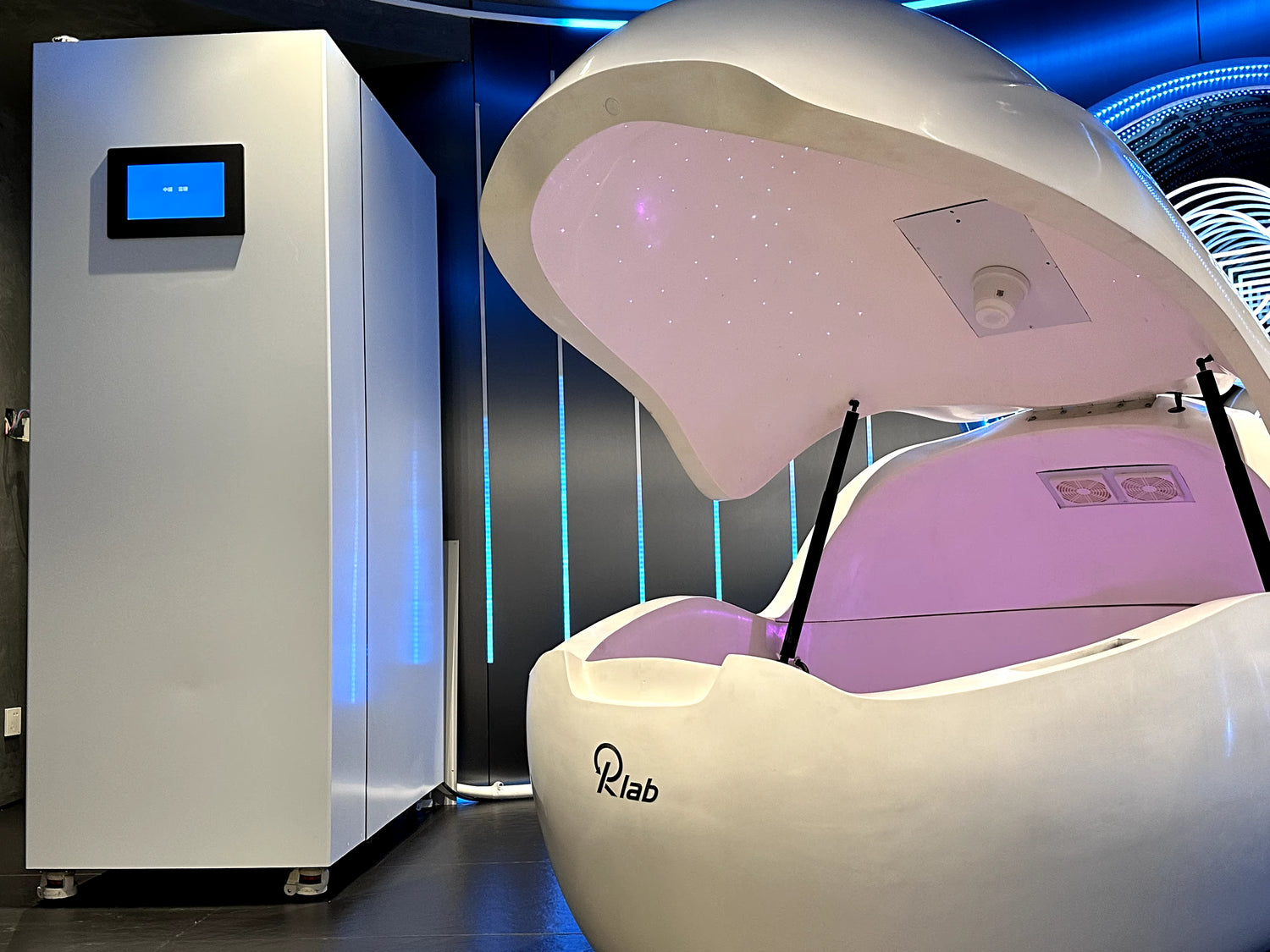
A profitable investment.
It allows you to expand your wellness services and provide an additional relaxation experience. It's the best way to increase your brand awareness and member satisfaction.
With more and more people turning to floatation therapy, installing a tank is a wise long-term investment.
The advantages and benefits
Flotation therapy is performed using sensory deprivation tanks (also called flotation tanks).
Our boxes are specially designed to cut yourself off from the world and offer deep relaxation.

Cut off from the world
The boxes are designed to reduce external stimuli as much as possible, allowing the recipient to let go.
To achieve this, the boxes are completely soundproof, the darkness is almost total (or not depending on the person's wishes), and the box is kept at the exact temperature of the body.
Thus, visual, sound, and thermoception stimuli are completely reduced.

A feeling of weightlessness
The box is filled with a flotation solution composed of water highly concentrated in Epsom salt (magnesium sulfate).
This allows for effortless floating and reduces pressure on muscles and joints.
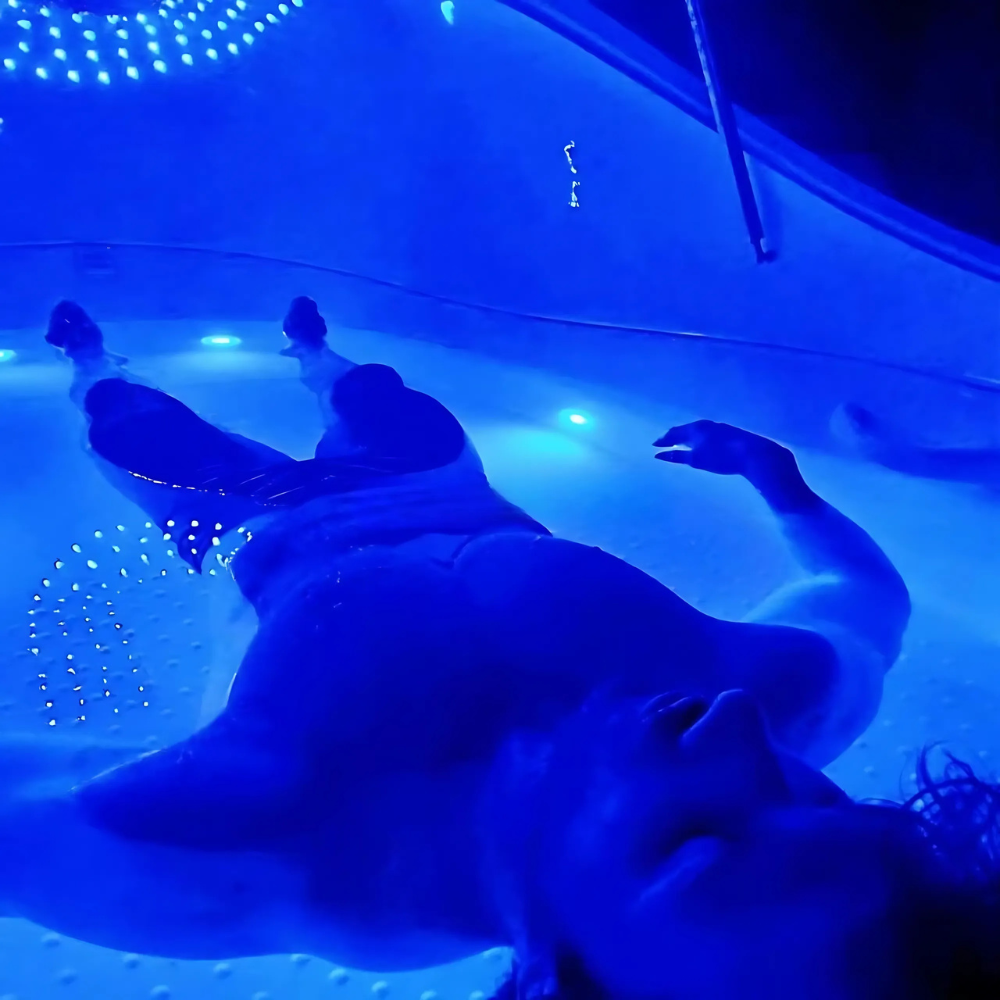
Benefits proven by science.
Numerous studies conducted in the United States and Sweden have shown that regular floatation sessions improve sleep and reduce stress.
It has been used for around thirty years by a growing number of people thanks to its proven benefits.
Frequently Asked Questions
How to buy a sensory deprivation tank?
You can see our available box models here .
If you are interested in either of these, please contact us for a quote.
Our boxes are delivered to your home and installation can be carried out by our services.
Are there any medical contraindications to floating?
It is suitable for everyone except:
- you have serious cardiovascular disease
- you are a pregnant woman in the first trimester of pregnancy
- you have open or skin wounds
- you suffer from psychological disorders such as acute claustrophobia, schizophrenia...
Is floatation therapy widely practiced?
Yes !
Since its democratization in the United States and in certain Nordic countries, flotation therapy is spreading more and more throughout the world.
In France, there are already more than thirty centers dedicated to flotation, and it's only increasing!
Offering this service means offering a new and much-appreciated mode of relaxation.
What studies show the benefits of floating?
Research on floatation therapy indicates many benefits.
In the United States, studies conducted at Ohio State University have found that floating improves creativity, accuracy in sports and reduces stress.
Another Swedish study showed that it reduces cortisol, a stress-related hormone, and relieves chronic pain, particularly in patients suffering from fibromyalgia and anxiety.
These results confirm the effectiveness of floating as a method of deep relaxation and pain management.
Source: Wikipedia
W......
Why the Sensory Deprivation Tank Changed the Wellness Industry
Sensory deprivation tanks, also known as "flotation tanks," are a fascinating innovation in the field of wellness. Designed to provide complete disconnection from external stimuli, they allow the user to immerse themselves in a unique environment of calm and serenity.
The sensory deprivation tank was originally developed in the 1950s by American neuropsychiatrist John C. Lilly, who was researching the effects of sensory deprivation. Lilly sought to understand how the brain reacts in the complete absence of external stimuli. This invention quickly became a therapeutic practice, transforming the way we think about well-being and relaxation.
Today, floatation tanks are primarily used for their benefits to the body and mind, providing a deep relaxation experience.
The idea is simple yet powerful: by floating in water saturated with Epsom salt, the body is naturally lifted, and the surrounding silence allows for total introspection. The user is thus invited to disconnect from daily distractions and achieve a state of intense relaxation.
This type of therapy is particularly sought after by those who wish to reduce their stress levels, improve their concentration, or even relieve certain physical pains.
Flotation tanks are enjoying increasing popularity, particularly in wellness centers and spas, where they are offered as a natural alternative for rejuvenating oneself. Whether for a simple relaxation break or for a more therapeutic approach, the tank experience is often described as unique and deeply soothing.
The sensory deprivation tank: from neuropsychiatry to a means of relaxation for the general public.
Sensory deprivation tanks were invented in the 1950s by John C. Lilly, a neuropsychiatric researcher who was exploring new avenues to understand how the human mind functions in the complete absence of external stimulation.
Initially, Lilly's experiments were motivated by a bold question: how does our mind react when it is completely cut off from the sensory world?
This questioning led to the creation of the first caissons, where flotation in salt water and isolation allowed a unique exploration of consciousness.
Over time, this technology evolved from research laboratories to wellness, finding a wider audience seeking relaxation and rejuvenation. The tubs became more sophisticated, incorporating modern materials to improve soundproofing and water temperature regulation—key elements for an optimal relaxation experience. These advances allowed users to immerse themselves in a state of deep calm, where stress and tension are naturally released.
Nowadays, interest in sensory deprivation tanks has spread internationally, particularly in France, where they are increasingly adopted in spas, wellness centers, and healthcare facilities.
Whether for stress management, physical recovery, or introspection, this technique attracts a diverse clientele, from professionals seeking to improve their concentration to individuals eager to reconnect with themselves in a world often overloaded with stimuli.
Sensory deprivation: a growing practice
In wellness centers and spas, floatation sessions are mainly used to offer a unique relaxation experience, far from usual practices.
These centers see the isolation tank as an effective tool for soothing the body and mind, attracting a diverse clientele: people seeking deep relaxation, stressed professionals looking to reduce their tensions, and even athletes in the muscle recovery phase.
In France, we are seeing a growing popularity for this technique, particularly in large cities like Paris, Lyon, and Bordeaux, where the demand for innovative wellness alternatives is high.
Internationally, countries like the United States, Canada, and Australia are leading the way, with many specialized centers offering flotation as a true sensory therapy.
This phenomenon is part of a global trend where more and more people are seeking to disconnect from constant demands in order to find inner balance.
Beyond simple comfort, the sensory deprivation tank has promising therapeutic applications. Used in stress management, it helps reduce anxiety by promoting relaxation through the complete absence of stimuli. Some health institutes and rehabilitation centers also incorporate it into physical recovery programs.
The soothing effects of floating can help relieve chronic pain, such as back and muscle pain, and improve sleep quality, making it a popular supplement among healthcare professionals.
How does floating help the body and mind relax?
Sensory deprivation tank floating offers a multitude of benefits for the body and mind, largely due to the absence of external stimuli.
By blocking sensory signals—light, noise, gravity—the chamber allows the nervous system to completely relax. This experience of total disconnection helps achieve a state of deep relaxation, where the body releases accumulated tension, and the mind, freed from external stimuli, can refocus.
On a physical level, floating is particularly effective at relieving muscle tension. Water saturated with Epsom salt, rich in magnesium, helps muscles relax and can reduce chronic pain, particularly back or joint pain.
For those who suffer from regular pain, such as migraines or muscle pain due to stress, a session in a massage chamber provides lasting physical relief. This muscle relaxation, in addition to promoting blood circulation, helps reduce body pain and stiffness, offering a natural alternative to more invasive solutions.
Beyond the physical benefits, sensory isolation has positive effects on mental health.
Indeed, this practice promotes a mental release that can help reduce anxiety and improve mood. The distraction-free environment of the box allows the mind to refocus and explore a state of deep inner calm. Many users experience improved mental clarity and creativity after a session, a natural consequence of brain relaxation.
This process helps the brain “clear its mind,” providing a real respite for those living with high levels of stress.
Athletes, too, find particular benefit in floatation sessions. In addition to promoting muscle recovery after exercise, the tank helps improve sleep quality, which is crucial for effective regeneration. Deep, restorative sleep is essential for the body and mind to regenerate, and the experience of isolation promotes precisely this state of complete rest.
For all these reasons, floating is much more than just relaxation: it offers a complete therapeutic approach, allowing the body and mind to recharge naturally.
The very special manufacture of flotation boxes
Sensory deprivation boxes are designed to provide an optimal relaxation and sensory isolation experience, thanks to an ingenious structure and carefully selected materials.
Specific materials
Typically made of durable, easy-to-clean materials like fiberglass or acrylic, floatation tanks are designed to be both durable and comfortable. Their bubble-shaped design (hence the name "buoyancy tank") allows for effortless lying, with full support and freedom of movement in the water.
The heart of the flotation tank: salt water
The heart of the tank is the flotation tank, filled with water saturated with Epsom salt, a magnesium-rich substance that increases the density of water, allowing the body to float naturally without effort.
This special water, at a temperature controlled to match that of the skin (between 36 and 38°), creates a unique sensation of weightlessness. Careful temperature control is essential to maintain comfort: the user feels neither hot nor cold, which reinforces the sensory isolation effect.
Complete soundproofing for a complete experience
Soundproofing is another key element of the box.
Most models are equipped with noise-reduction systems, or even completely sealed, to ensure near-absolute silence. The enclosure's walls, often thick and insulating, block out outside sounds and allow users to fully immerse themselves in the peace and quiet.
Our models even offer customization options, such as adding soft lights inside, which the user can adjust or turn off according to their preferences.
Hygiene is obviously not neglected in our crates.
To ensure a hygienic experience, the tanks are equipped with high-performance filtration systems, often multi-stage, to purify the water after each use. The combination of filters and disinfectants maintains a clean and safe environment for every session.
These filtration systems are essential to preserve the quality of the Epsom salt-saturated water and prevent the proliferation of bacteria, thus ensuring a pleasant and healthy experience with every session.
Finally, some boxes allow for customization of the experience to adapt to individual preferences: slightly adjustable water temperature, adjustable light levels, or even the integration of soothing sound diffusion options, such as relaxation frequencies.
These options present in our sensory deprivation tanks allow everyone to have the possibility of creating the flotation environment that suits them best.
The course of a floatation session
A session in a sensory deprivation tank takes place in several simple steps, which encourage relaxation from the start.
Before you begin, some preparation time is recommended to get into the mood: remove your jewelry, shower to remove natural skin oils, and insert earplugs to maximize sound insulation. Some facilities even offer a brief introduction to explain how the box works and help new users feel comfortable.
Once ready, the user enters the chamber and settles into the Epsom salt-saturated water, choosing a natural floating position where they feel comfortable. Floating effortlessly provides a feeling of weightlessness, and the water temperature, perfectly adjusted to that of the skin, gives the impression of merging with the liquid environment.
The first few moments can be surprising, especially for those who are not used to this type of sensory disconnection, but it only takes a few minutes to feel completely safe and begin to relax.
As the body relaxes, feelings of lightness and deep calm appear.
In the absence of external stimulation, the mind can wander, or conversely, focus on a sense of calm. Many users describe a feeling of mental "floating," where the internal noise of thoughts gradually diminishes, replaced by a soothing silence.
In this environment of total calm, the relaxing effects are immediate : the muscles relax, the heart rate slows, and a feeling of overall well-being invades the body.
To maximize the experience, especially during your first session, we recommend not fighting the new sensations. Breathing calmly, closing your eyes, and allowing yourself to float can quickly achieve a state of deep relaxation.
At the beginning of a session, some people prefer to focus their attention on their breathing to facilitate the transition into a meditative state. Small tricks, such as adjusting arm position or taking breaks to stretch, can also help you achieve greater comfort.
Finally, leaving the chamber is a moment to be savored. After a session of approximately 60 minutes, you emerge with a feeling of lightness and serenity. The beneficial effects of this relaxation last for several hours, sometimes even several days.
Once the session is over, it is advisable to remain quiet for a moment to gently return to reality, allowing the body and mind to fully integrate the benefits of this unique experience.
Sensory isolation tanks have become essential for relaxation.
Flotation tanks are distinguished by their profound and unique effects on well-being, offering benefits that few other relaxation methods can match.
Compared to more traditional practices like massage or guided meditation, floating tanks provide total immersion and a state of physical and mental relaxation that is difficult to achieve otherwise. Sensory deprivation floating acts on both the body and mind, allowing you to release physical tension and create a space of mental calm where thoughts can dissipate.
The most appreciated aspect of floating is its natural and side effect-free approach.
Unlike drug relaxants or more invasive therapeutic interventions, the chamber allows you to achieve a state of complete relaxation without resorting to chemical substances.
This experience of sensory disconnection promotes a natural regeneration of physical and mental resources, which meets the needs of relaxation and well-being in a gentle and respectful way for the body.
Compared to other relaxation methods, floatation tanks create an environment where silence and the absence of stimulation enhance the impact of each session.
For example, while a guided meditation session can require intense concentration to relax, the box, by removing external distractions, facilitates this state of letting go. Similarly, while a massage primarily targets the muscles, flotation acts holistically, providing profound benefits without external manipulation.
Choosing sensory isolation tanks means opting for immersive and transformative relaxation, a journey towards an inner calm that is difficult to achieve in our daily routines.
Whether you're looking to ease tension, reduce stress, or simply take some time for yourself, the sensory isolation tank offers an authentic and effective approach to finding lasting balance.
